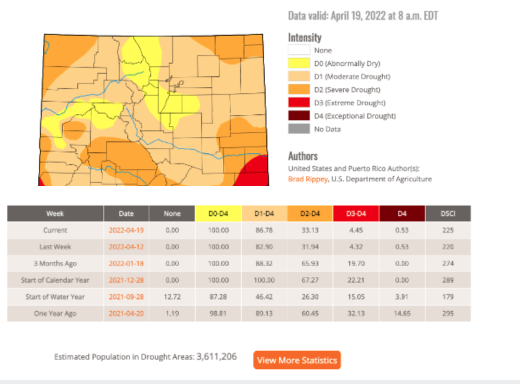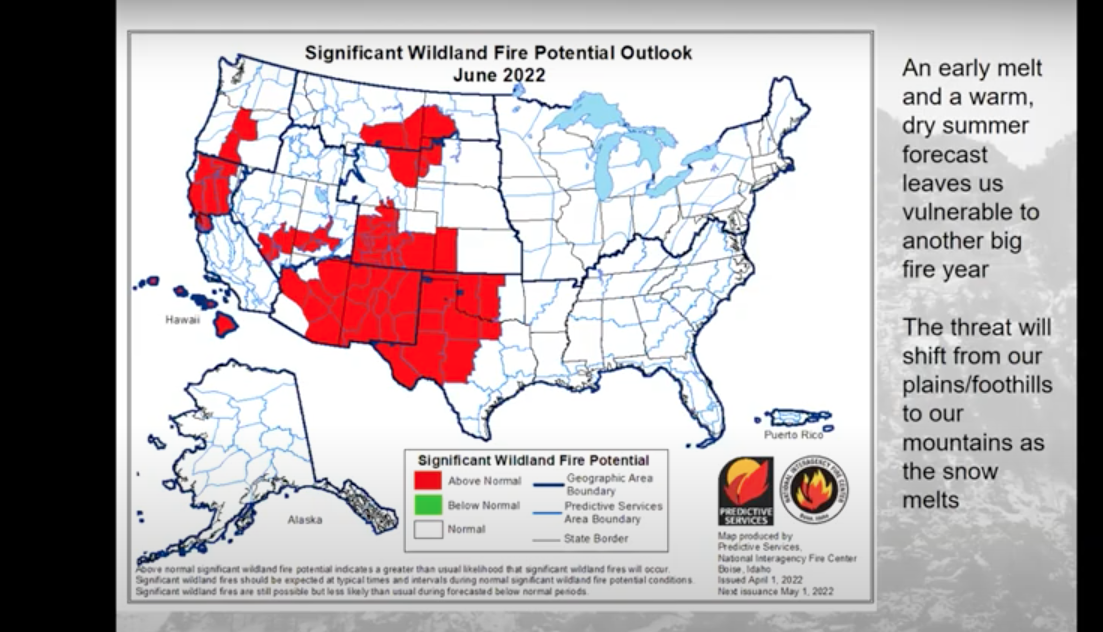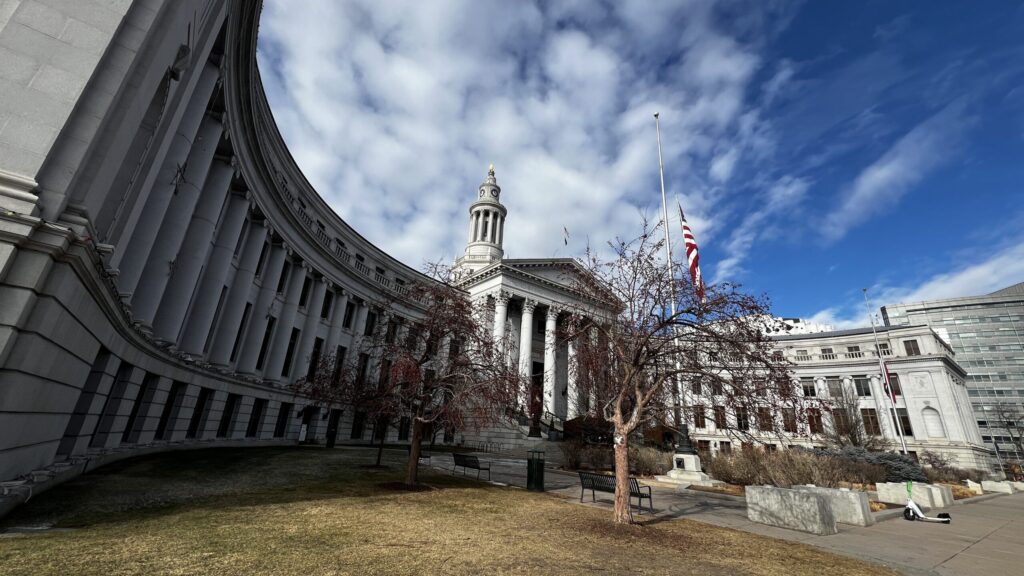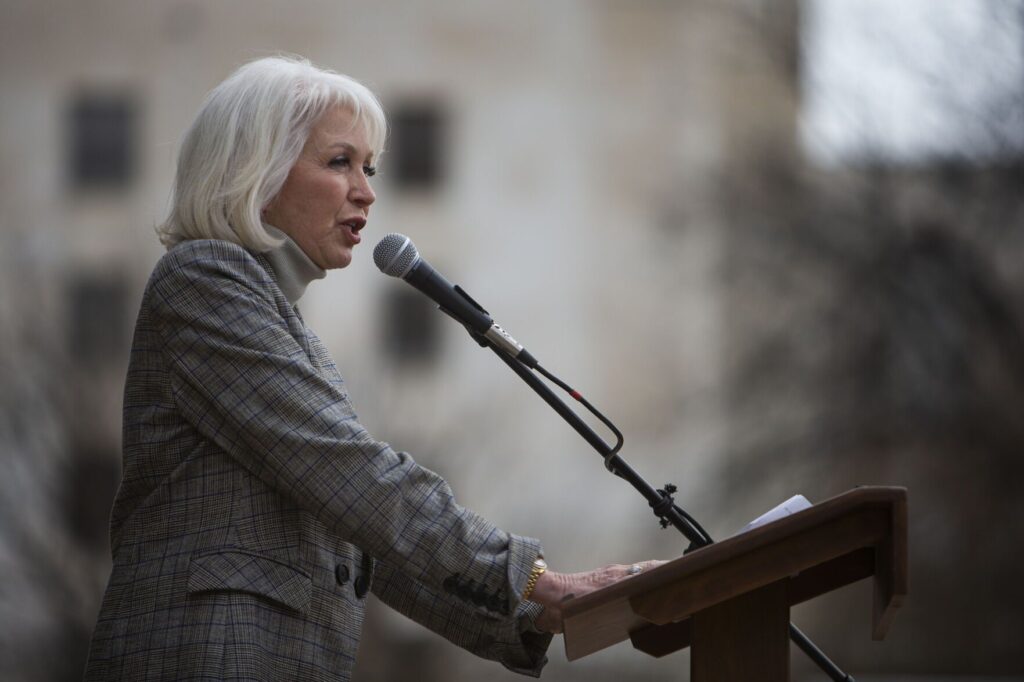The snowmelt is on – and that’s too soon in Colorado, say water watchers

The concern over drought over the past couple of years has focused on the Western Slope and much of southern and southeastern Colorado, but water watchers said on April 19 that a lack of precipitation is now a factor for the Eastern Plains, as well, just when farmers are getting ready to plant.
Colorado’s drought situation is a little better than it was a year ago, but warm temperatures, windy conditions in April and almost no precipitation in parts of the state means the snowpack is melting a couple of weeks sooner than most water watchers would prefer.
The state’s Water Availability Task Force met on April 19 to look at the most recent numbers from the Colorado Climate Center at Colorado State University and the Natural Resources Conservation Service, which is a part of the U.S. Department of Agriculture.
The climate center’s Peter Goble, who looked at temperature and precipitation over the past month, said March temperatures were average around most of the state, but compared to historic averages, just a tad cooler than normal.
It’s normal to have higher winds this time of year, he said, but when those winds come without moisture, it means lower humidity and more evaporation.
From October to March – the first six months of a water year that started October 1 – it’s been much drier than average in southern Colorado, the San Luis Valley and Rio Grande River basin and on the Eastern Plains, but wetter than normal in northwestern Colorado, he said.
April ends the wet season for the mountains and begins the wet season for the Eastern Plains. But the moisture has stayed away from the Eastern Plains, Goble said.
“To see it ‘skunked’ for the month of April” is concerning, he said, given that’s when the agriculture season – and planting – start up.
The precipitation for most of the state, he said, is likely to be “wimpy” for the rest of April. That means the long-term drought is not going away anytime soon, with precipitation below normal for the past two years.
According to the U.S. Drought Monitor, which reports drought conditions weekly, while the entire state is in some level of drought, compared to a year ago Colorado is not seeing the worst levels, known as exceptional drought.

That’s particularly true for the Western Slope, with snowpack in better shape now than a year ago, Goble said.
The next six weeks will be critical for the Eastern Plains, he added.
“You want a couple of good million-dollar rains to help facilitate growth of crops” and for forage lands, he said.
But Colorado could be heading into its third straight year of La Niña conditions, which is what’s driving warmer temperatures and less precipitation. Goble said a third La Niña year, which is rare, is anticipated.
“The deck is stacked against us,” he said.
The drier conditions means the threat for significant wildfires in June is elevated across much of the state, including the high country.
La Nina reduces the state’s chance for drought recovery, he said.

NRCS hydrologist Karl Wetlaufer offered slightly better news when it comes to the state’s water supply, including for reservoir storage. While not a drought buster, water storage is substantially better than it’s been the last couple of years, he said.
The expectation is that snowmelt is ramping up and unfortunately sooner than hoped for, he said.
That situation is taking place in all of the major basins, starting the last weekend in March. Every basin in the state is experiencing below normal reservoir storage, save for the South Platte. That said, snowpack is experiencing near normal conditions for most basins, which will help drive up reservoir levels. Precipitation is also near normal for many of the state’s basins, such as the Colorado and the South Platte.
Water supply at the Gunnison basin has been critically low, especially at Blue Mesa, the state’s largest reservoir, although snowpack has been slightly above normal, helped out by big storms at the end of the year. Blue Mesa can hold 800,000 acre-feet of water but it’s only at 40% of average, due to water being drawn down to send to Lake Powell and to keep the hydropower going.
Wetlaufer said experts expect Blue Mesa to reach 550,000 acre-feet, which is an improvement.
“We’re looking at a long journey to replenish the bigger reservoirs,” Wetlaufer said, adding that assessment applies to both Colorado and the Colorado River basin throughout the west.
The state’s trouble spots are in the Upper Rio Grande and in the lower Arkansas, according to Wetlaufer’s data. The Rio Grande is already seeing substantially earlier snowmelt, he said. It’s unlikely there will be enough precipitation to gain even average streamflow in the river, he said.
That’s going to be a problem for the streamflow in areas like the southern Sangre de Cristos, and that in turn will affect compacts tied to the lower Rio Grande, which flows into New Mexico.
Similar to the Rio Grande, the lower Arkansas is also seeing an earlier than normal snow melt, he said, although the main stem of the Arkansas, closer to its headwaters, is faring better.













